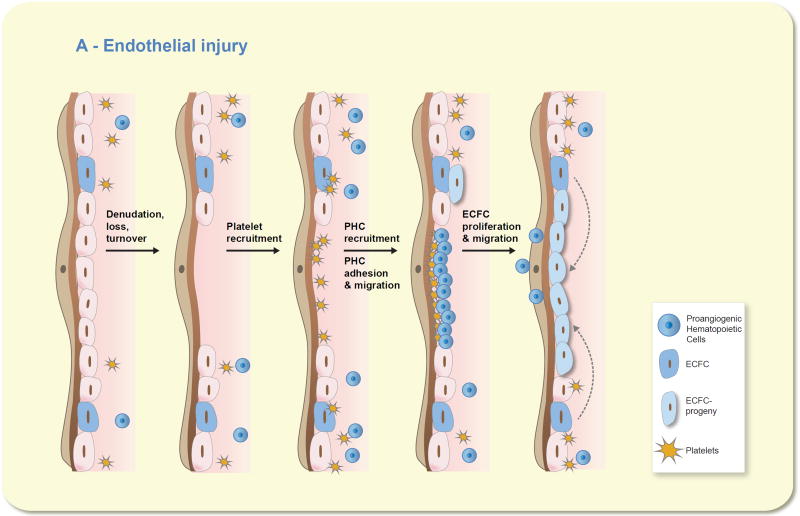Figure 4.
Proangiogenic hematopoietic cells (PHC) do not become endothelial cells but do stimulate resident endothelial colony forming cells (ECFC) to repair the intima. Moving from the left to the right on the image, one can visualize that any denudation injury that causes loss or turnover of the resident endothelial cells results in an area of exposed subendothelial basement membrane. Circulating platelets would be readily recruited to the exposed basement membrane and would release chemokines and growth factors to recruit circulating PHC, ranging from bone marrow progenitor cells to mature circulating monocytes and neutrophils, to assist in adhering to the basement membrane. The recruited PHC secrete a host of growth factors, chemokines, and proteolytic enzymes to stimulate the proliferation and migration of resident ECFC into the site of the injury to reconstitute the endothelial barrier and promote normal homeostatic functions through the injured vessel segment. The PHC merely migrate into the tissue where they can differentiate into mature tissue resident cells, re-enter the circulation, or undergo senescence and are cleared by macrophages in the tissues.

